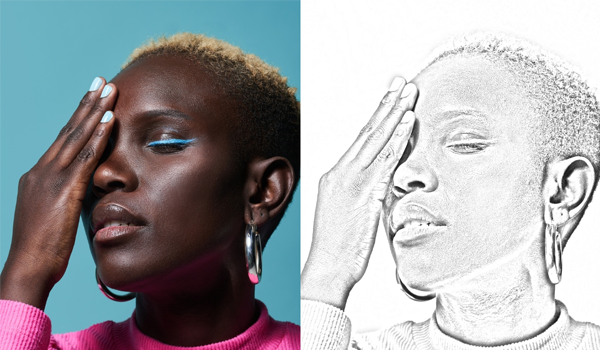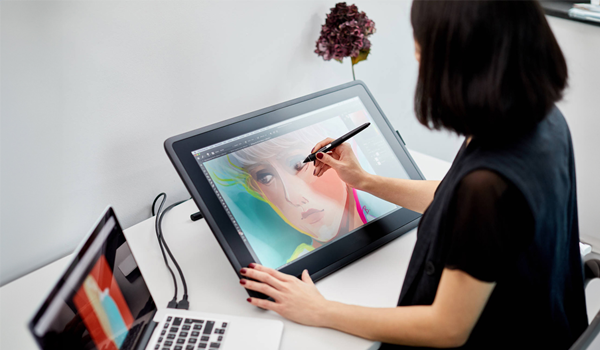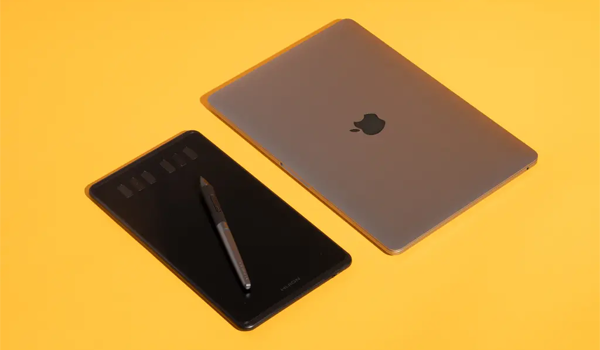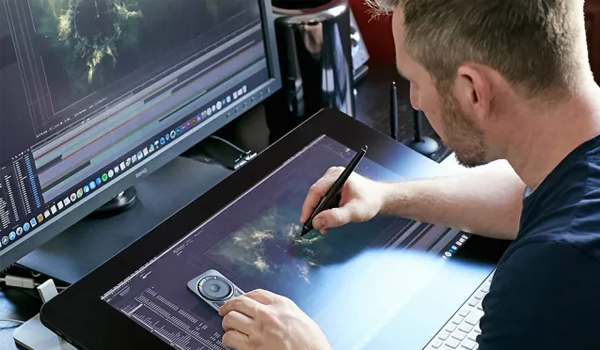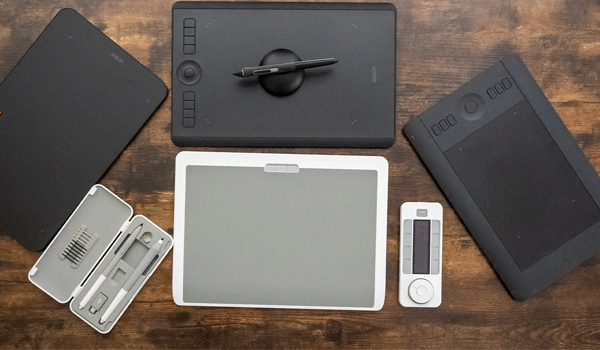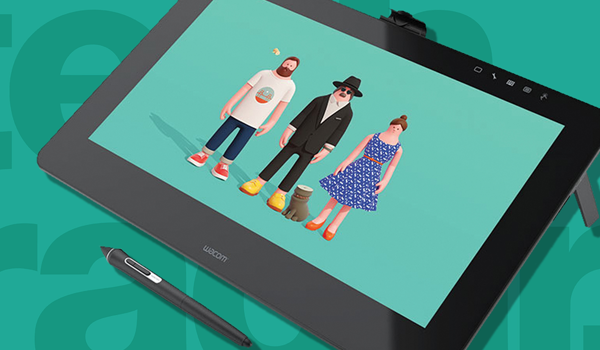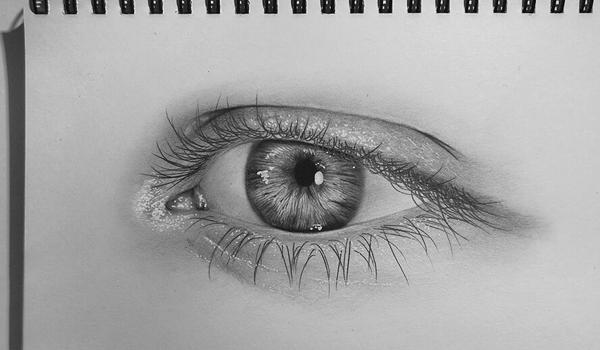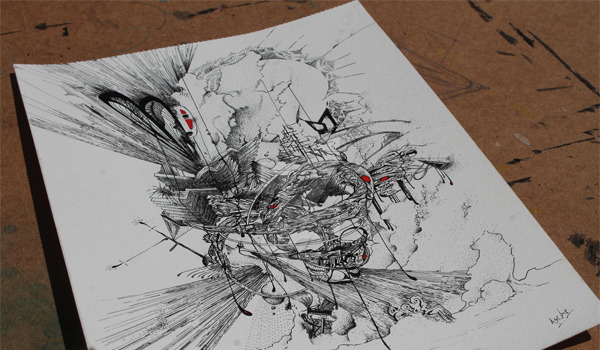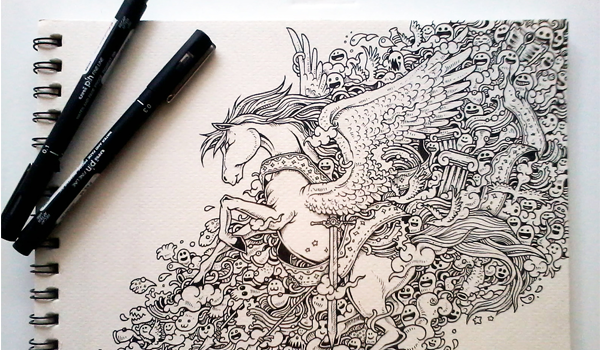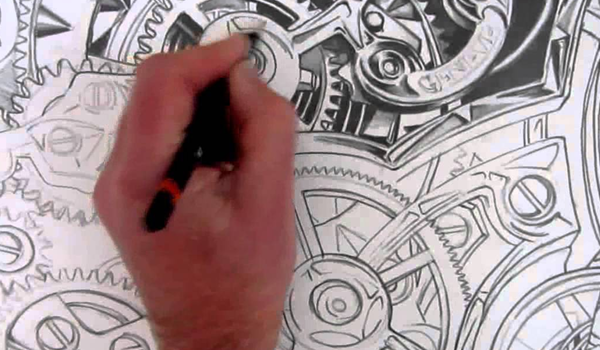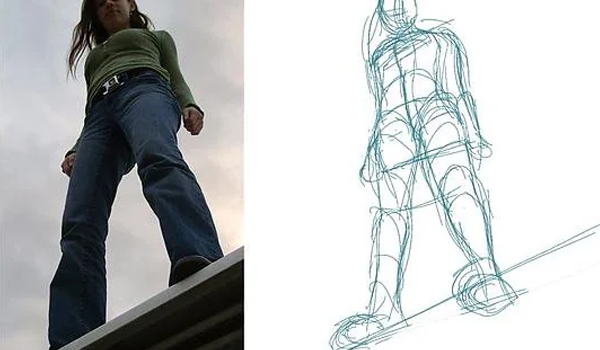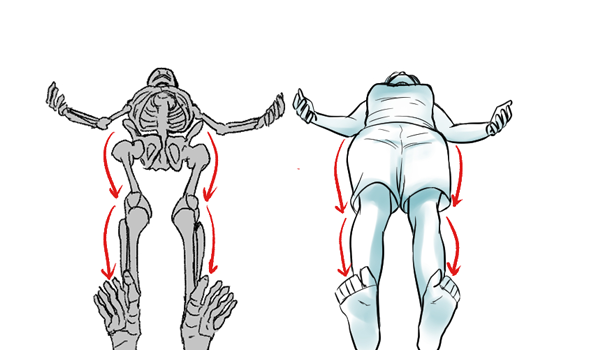Top 5 App That Turns Pics Into Drawings Instantly
In today’s digital age, capturing and sharing moments through photos is easier than ever. But what if you could transform those cherished memories into unique pieces of art? With the rise of AI and digital editing tools, there is now a wide variety of app that turns pics into drawings. These apps allow you to explore your creative side, whether you’re a professional artist or just looking to add a personal touch to your social media posts. In this blog post, we will delve into the world of photo-to-drawing apps, exploring why these tools are popular and the benefits they offer.
Introduction to Photo-to-Drawing Apps
The digital transformation in photography has opened the door to innovative ways of enhancing and repurposing images. Among these innovations are app that turns pics into drawings, which use advanced algorithms to convert your photographs into hand-drawn sketches, paintings, or cartoon-style images. These apps offer a simple yet powerful way to create artistic renditions of your photos without the need for traditional drawing skills. Whether you want to create a personalized gift, spice up your social media feed, or just explore your artistic side, these apps provide endless possibilities.
Why Use Apps to Turn Photos into Drawings?
There are several reasons why you might choose to use an app that turns pics into drawings. First and foremost, these apps make it incredibly easy to create stunning artwork from your photos with just a few taps. No need for expensive software or artistic training—anyone can turn a snapshot into a masterpiece. Additionally, these apps often come with a variety of styles and effects, allowing you to experiment with different looks and find the perfect style that matches your vision. From pencil sketches to watercolor paintings, the creative potential is vast.
Another reason to use these apps is the ability to share your creations instantly on social media. Many of these tools are designed with sharing in mind, making it easy to upload your drawings directly to platforms like Instagram or Facebook. This can be particularly useful for content creators and influencers looking to engage their audience with unique and visually appealing content.
Benefits of Transforming Photos into Drawings
Using an app that turns pics into drawings offers several benefits beyond just artistic expression. For one, these apps allow you to add a personal touch to your images, making them stand out in a sea of generic photos. This can be particularly valuable for branding or marketing purposes, where unique visual content can help capture attention and convey a specific message.
Moreover, transforming photos into drawings can also be a therapeutic activity. The process of selecting an image, choosing a style, and watching it transform can be a relaxing and enjoyable experience, offering a creative outlet for stress relief. Lastly, these apps are often accessible and easy to use, making them a great tool for beginners and seasoned artists alike. Whether you’re looking to create a new profile picture, a custom gift, or just explore digital art, these apps provide a simple and fun way to express your creativity.
Top Apps to Convert Photos into Drawings
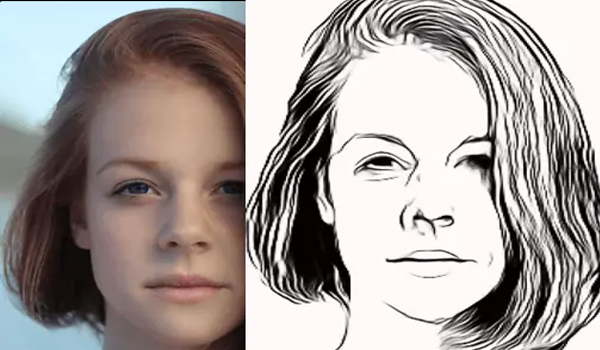
With the growing popularity of digital art, the demand for apps that can transform photos into drawings has surged. These apps range from simple tools for casual users to more advanced software that offers detailed customization for artists. In this section, we will explore some of the top app that turns pics into drawings, highlighting their unique features and how they can help you bring your photos to life in a new artistic form.
PhotoDirector – The Most Versatile App
Among the various apps available, PhotoDirector stands out as one of the most versatile and user-friendly options for turning photos into drawings. This app combines powerful AI-driven technology with a range of artistic filters, allowing users to create stunning sketches, paintings, and other forms of digital art with ease. Whether you’re looking to create a quick sketch or a detailed drawing, PhotoDirector provides the tools and flexibility needed to achieve professional-quality results.
Key Features
PhotoDirector is packed with features that make it a top choice for both beginners and experienced users:
- Wide Range of Artistic Filters: PhotoDirector offers a variety of filters that can transform your photos into different artistic styles, including pencil sketches, watercolor paintings, and more. These filters are highly customizable, allowing you to adjust the intensity and style to suit your preferences.
- AI-Powered Editing: The app utilizes advanced AI technology to automatically detect and apply drawing effects to your photos. This not only saves time but also ensures that the final output looks natural and artistically pleasing.
- Customizable Effects: Users can tweak various aspects of the effects, such as brightness, contrast, and saturation, to fine-tune the look of their drawings. This level of control allows for greater creativity and personalization.
- Ease of Use: Despite its powerful features, PhotoDirector is designed with a user-friendly interface that makes it accessible to everyone. Whether you’re new to photo editing or an experienced artist, you’ll find the app easy to navigate and use.
How to Use PhotoDirector
Using PhotoDirector to turn your photos into drawings is straightforward. Here’s a step-by-step guide:
- Download and Install: Start by downloading PhotoDirector from your app store and installing it on your device.
- Import Your Photo: Open the app and select the photo you want to convert. You can either upload an image from your gallery or take a new picture directly within the app.
- Choose an Artistic Filter: Navigate to the ‘Artistic’ section and browse through the available filters. Select the one that best matches the style you want to achieve.
- Customize the Effect: Use the sliders and editing tools to adjust the effect’s intensity, contrast, and other parameters until you’re satisfied with the result.
- Save and Share: Once you’re happy with your drawing, save it to your device or share it directly on social media platforms like Instagram or Facebook.
PhotoDirector offers a seamless way to explore your creativity and turn ordinary photos into extraordinary works of art. With its combination of ease of use and powerful editing tools, it’s no wonder this app is a favorite among users looking to transform their pictures into drawings.
Prisma – Artistic Filters for a Unique Look
Prisma is another standout app in the world of photo-to-drawing converters, renowned for its wide variety of artistic filters that allow users to transform their photos into artwork reminiscent of famous painting styles. Unlike some other apps that focus purely on sketching effects, Prisma offers a broader range of artistic transformations, from abstract designs to classic painting styles inspired by renowned artists like Picasso and Van Gogh. This makes Prisma an excellent choice for users looking to add a creative flair to their photos, turning them into unique pieces of digital art.
Standout Filters and Styles
One of Prisma’s key attractions is its extensive library of artistic filters, each designed to give your photos a distinct look:
- Famous Art Styles: Prisma is perhaps best known for its filters that mimic the styles of famous artists. Whether you want to give your photo the bold, colorful strokes of Van Gogh or the abstract, cubist style of Picasso, Prisma has a filter for that. These filters are not just simple overlays; they intricately transform your photo to resemble a painting created by the artist, capturing the essence of their style.
- Modern and Abstract Art: Beyond classic painting styles, Prisma offers filters that turn your photos into modern and abstract art pieces. Filters like “Heisenberg” and “Curly Hair” introduce a contemporary twist, perfect for those looking to create something more unconventional and visually striking.
- Customizable Effects: Prisma also allows users to adjust the intensity of the filters, giving you control over how much of the artistic style is applied. This feature is particularly useful if you want to maintain some of the original photo’s details while still achieving a dramatic effect.
These features make Prisma a versatile tool for anyone looking to experiment with different artistic styles and create something truly unique.
Prisma vs Other Apps
When comparing Prisma to other app that turns pics into drawings, several distinctions make it stand out:
- Artistic Breadth: While many other apps focus primarily on sketch and pencil effects, Prisma offers a much broader range of artistic transformations. This makes it a better choice for users interested in experimenting with various art styles beyond traditional drawing and sketching.
- Ease of Use: Prisma’s interface is designed with simplicity in mind, making it accessible to users of all skill levels. However, despite its simplicity, the app delivers highly sophisticated results, which is a significant advantage over some other apps that might require more technical know-how.
- Community and Sharing: Prisma has a strong community aspect, with an integrated platform where users can share their creations and view others’ work. This social component is less emphasized in other similar apps, which often focus solely on the editing process without offering a space for community interaction.
In conclusion, Prisma provides a unique blend of artistic filters that set it apart from other app that turns pics into drawings. Its ability to replicate famous art styles and offer a wide variety of filters makes it a top choice for users looking to infuse their photos with a distinctive artistic touch.
Sketch Me! – Best for Beginners
Sketch Me! is a fantastic option for those who are new to transforming photos into sketches. This app is designed with simplicity in mind, making it accessible to users who may not have much experience with photo editing software. Despite its user-friendly interface, Sketch Me! still offers a range of powerful tools that allow users to create high-quality sketches with minimal effort. This makes it an ideal starting point for beginners who want to explore the world of digital art.
Simple Steps to Create Sketches
Sketch Me! simplifies the process of turning photos into sketches, ensuring that even novices can create impressive artwork in just a few steps:
- Upload Your Photo: Begin by selecting a photo from your gallery or taking a new picture directly within the app.
- Choose a Sketch Effect: Browse through the available sketch effects, such as pencil, pastel, or color sketch, and select the one that best suits your needs.
- Adjust the Effect: Use the app’s simple sliders to adjust the intensity of the sketch effect, as well as other parameters like brightness and contrast, to fine-tune your image.
- Save and Share: Once you’re satisfied with your sketch, save it to your device or share it directly on social media platforms.
These straightforward steps make Sketch Me! an excellent tool for beginners who want to quickly and easily convert their photos into sketches.
Customization Options
While Sketch Me! is easy to use, it also offers enough customization options to satisfy users looking for a bit more control over their final product:
- Adjustable Filters: Users can tweak various aspects of the sketch effects, such as line thickness and shading, to create a more personalized look.
- Color Control: The app allows you to play with colors, either by keeping the sketch monochrome or adding a splash of color to enhance certain elements of the image.
- Fine-Tuning Tools: Additional tools let you refine the brightness, contrast, and saturation levels, giving you more control over the final appearance of your sketch.
These customization options make Sketch Me! not only beginner-friendly but also versatile enough for users who want to experiment with their sketches.
ToonMe – Perfect for Cartoonizing Photos
If you’ve ever wanted to see yourself or your friends as cartoon characters, ToonMe is the app for you. This app specializes in turning photos, especially selfies, into vibrant cartoon versions. With its intuitive interface and high-quality output, ToonMe has become a popular choice for users who want to add a fun, animated twist to their photos.
Transforming Selfies into Cartoons
Using ToonMe to create cartoon versions of your selfies is both fun and straightforward:
- Upload a Selfie: Start by choosing a selfie from your gallery or taking a new one with the app’s built-in camera.
- Select a Cartoon Style: ToonMe offers a variety of cartoon styles, from classic 2D animations to more detailed 3D models. Choose the one that best matches your personality or the look you’re going for.
- Apply the Cartoon Effect: The app’s AI quickly processes your image, transforming it into a cartoon. You can preview different styles and choose the one you like the most.
- Save and Share: Once your cartoon is ready, save it or share it directly on social media, where it’s sure to attract attention.
This process is not only simple but also highly engaging, making ToonMe a favorite for users who enjoy playful and creative photo transformations.
Best Use Cases for ToonMe
ToonMe is versatile and can be used in various scenarios to add a touch of creativity to your images:
- Social Media Profiles: Create a unique and eye-catching profile picture that stands out from the typical photos.
- Fun Gifts: Turn a friend’s photo into a cartoon and present it as a personalized, whimsical gift.
- Marketing and Branding: Use cartoon versions of photos in promotional materials to give your brand a fun and approachable image.
These use cases highlight how ToonMe can be more than just a fun app—it can also serve as a valuable tool for creative expression and marketing.
How to Choose the Right App for Your Needs
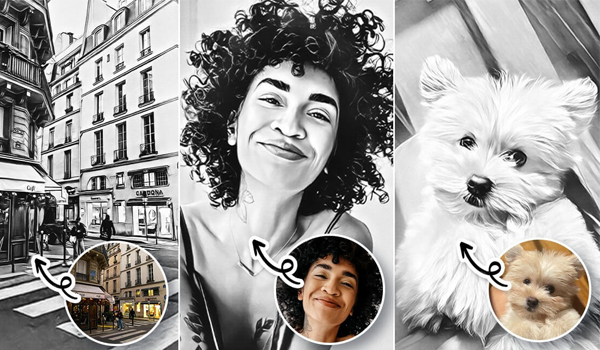
With so many app that turns pics into drawings available today, choosing the right one can be overwhelming. Each app offers different features, levels of complexity, and price points, making it essential to find one that best suits your specific needs. Whether you’re a beginner looking for an easy-to-use app or an experienced artist seeking advanced features, understanding what each app offers can help you make an informed decision. In this section, we’ll discuss the key factors to consider when selecting the best app for your photo-to-drawing transformations.
Factors to Consider: Ease of Use, Features, and Cost
When selecting an app that turns pics into drawings, it’s important to consider the following factors to ensure you pick the one that aligns with your requirements:
- Ease of Use: If you’re new to photo editing, you’ll likely want an app with a straightforward interface and simple tools. Apps like Sketch Me! are perfect for beginners due to their intuitive design and easy-to-follow steps. Conversely, if you’re more experienced and want to explore detailed customization, an app like PhotoDirector might be a better fit, as it offers more advanced features while still being user-friendly.
- Features: Different apps offer different features. For instance, Prisma is known for its artistic filters inspired by famous artists, making it ideal if you’re looking to create artwork that mimics classic styles. On the other hand, ToonMe focuses on cartoonizing photos, perfect for users who want to create fun and animated images. Consider what kind of output you’re interested in—whether it’s sketches, paintings, or cartoons—and choose an app that excels in that area.
- Cost: Cost is another crucial factor. Many apps offer both free and paid versions. Free apps or versions may have limited features or include ads, while paid apps generally provide a wider range of tools and effects, along with an ad-free experience. It’s important to evaluate whether the additional features in a paid version are worth the cost for your specific needs.
Comparing Free vs Paid Options
The choice between free and paid apps often depends on your budget and how extensively you plan to use the app:
- Free Options: Free apps like Photo Sketch Maker or the free versions of more comprehensive apps like Prisma are great for casual users who want to experiment without committing financially. These apps often provide basic tools and a limited selection of filters, which are sufficient for simple projects or occasional use.
- Paid Options: If you’re looking for more advanced features, such as higher resolution outputs, a broader range of artistic styles, or more control over the final image, paid apps like PhotoDirector or the premium versions of Prisma and ToonMe might be worth the investment. These versions usually remove ads, unlock additional tools, and provide better overall performance, making them ideal for professional use or for those who frequently edit photos.
By considering these factors—ease of use, features, and cost—you can select the app that best matches your creative goals and technical needs.
Conclusion
Choosing the right app that turns pics into drawings can significantly enhance your digital art experience. Whether you’re a beginner looking for something simple or an experienced user in need of advanced tools, there’s an app out there for you. PhotoDirector is ideal for those seeking versatility, Prisma excels in artistic transformations, Sketch Me! is perfect for beginners, and ToonMe is great for creating fun cartoons. By considering your specific needs, ease of use, desired features, and budget, you can find the perfect app to help you transform your photos into stunning works of art.
